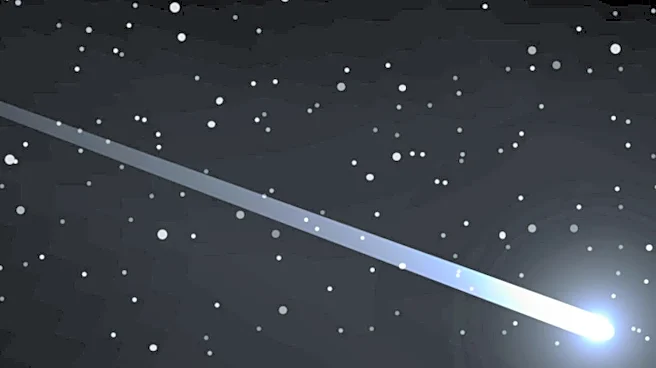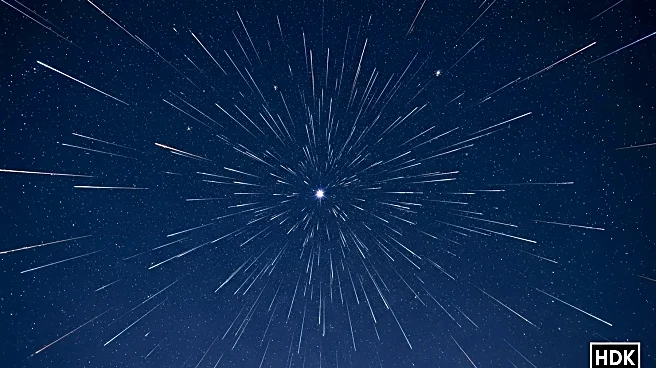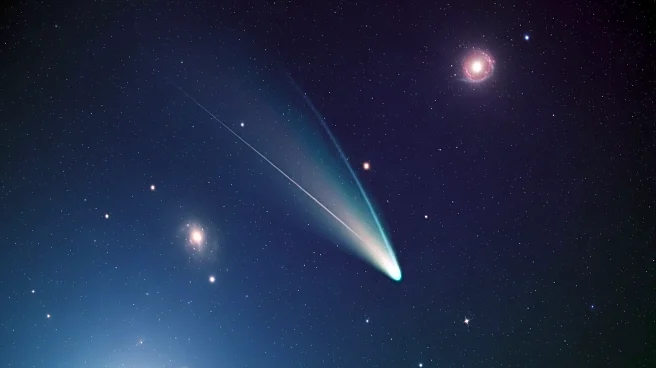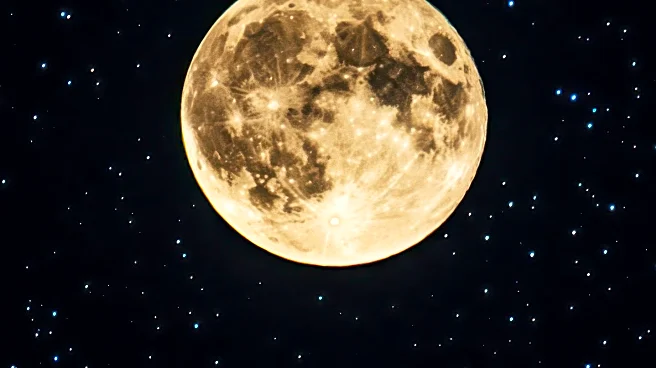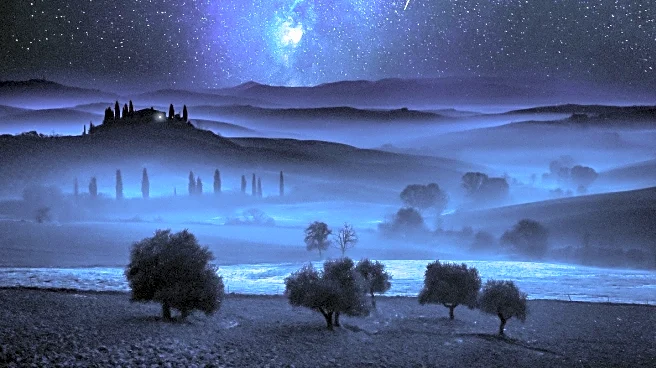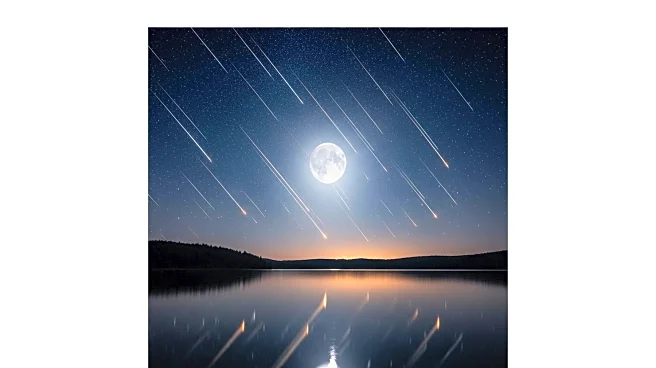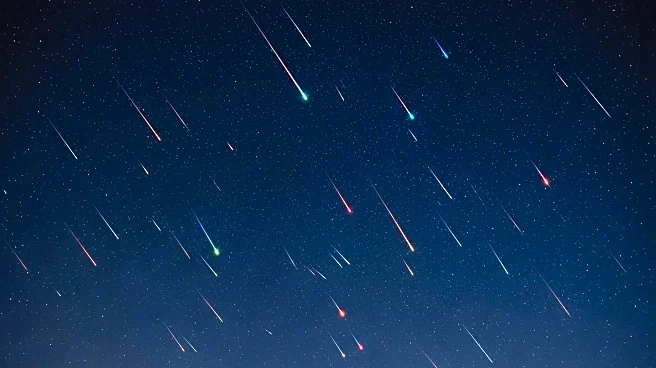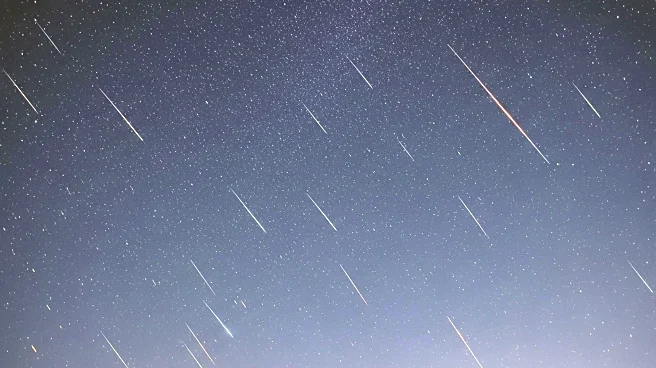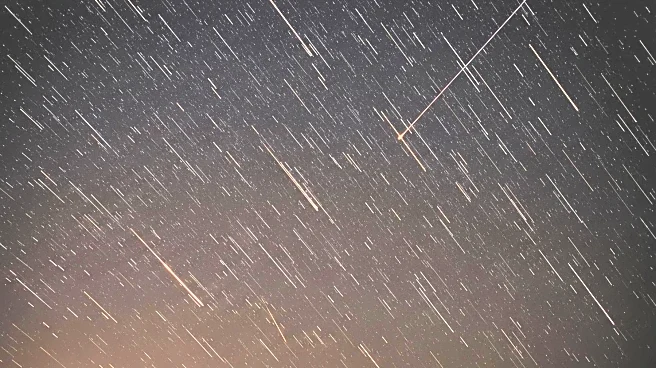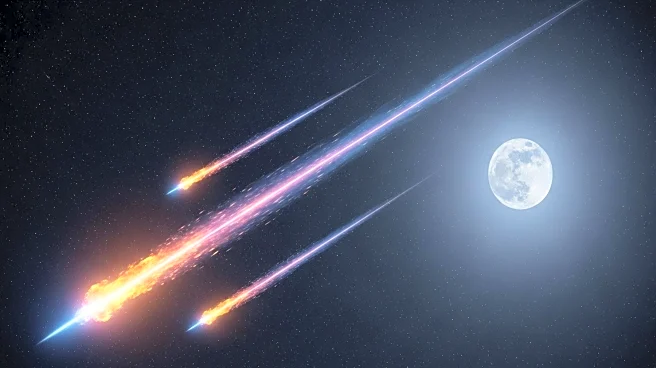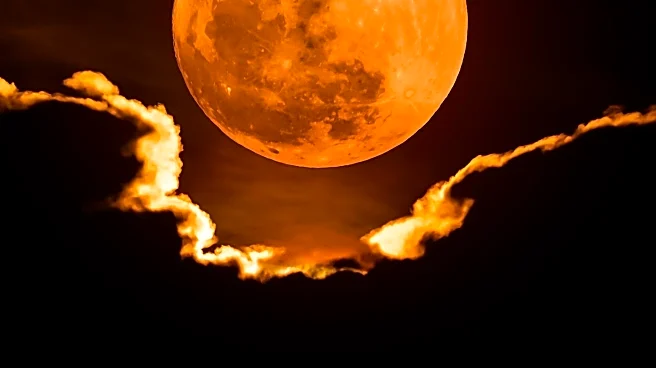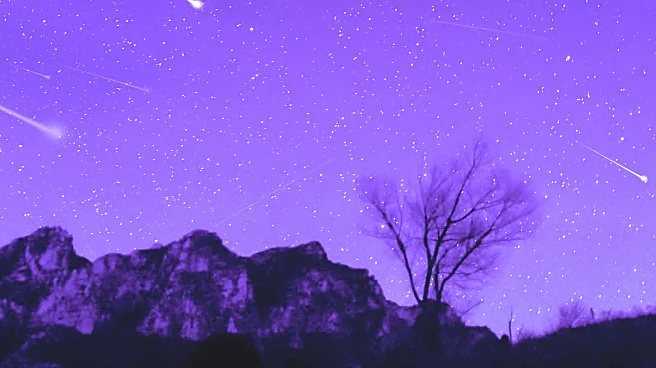What is the story about?
What's Happening?
The Draconid meteor shower, resulting from Earth passing through the debris trail of the comet 21P/Giacobini-Zinner, is set to illuminate the skies over North America. This celestial event occurs from October 6 to October 10, with its peak expected on October 8 at 3 p.m. EDT. The comet, discovered in 1900, is a periodic one, meaning it frequently orbits within the inner solar system. This year, the shower is anticipated to be more vibrant due to the comet's recent perihelion in March, which left a fresh trail of debris. Typically, the Draconids are less celebrated due to their modest display, but this year could see an increase in meteor activity.
Why It's Important?
The Draconid meteor shower provides a unique opportunity for stargazers and astronomers to observe a potentially spectacular natural phenomenon. The event highlights the dynamic interactions within our solar system and offers insights into the behavior of comets and their impact on Earth's atmosphere. For the public, it presents a chance to engage with astronomy and appreciate the wonders of the universe. The increased activity this year could lead to a significant number of meteors visible per hour, making it a noteworthy event for both amateur and professional astronomers.
What's Next?
Observers are encouraged to view the Draconid meteor shower shortly after sunset, as the meteors will be most visible then. However, a near-full moon may affect visibility by brightening the sky. Despite this, the shower remains a worthwhile spectacle, especially for those in the Northern Hemisphere. Future observations and studies of the Draconids could provide further understanding of cometary behavior and meteor shower dynamics.
AI Generated Content
Do you find this article useful?
